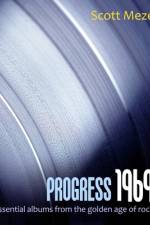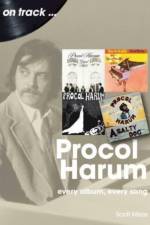- Essential albums from the golden age of rock
av Scott Meze
197
Rock's golden age happened to correspond with the golden age of vinyl. The second of a series that explores this music year by year, this book documents the albums you should hear and own from 1968. It includes more than 400 recommendations, 55 of which are featured as essential. A LAVISH GUIDE TO THE ALBUMS THAT MATTER The greatest albums from the greatest period in the history of popular music were disseminated on 12-inch circles of pressed black plastic. There were other formats but none that competed for dominance, and the whole point of rock was to separate an album culture from singles-based pop. The fact that rock artists found other ways to fill those 12-inch circles than simply collections of three minute songs, in defiance of the economics, the commercial pressures, the disapproval of their labels, and radio playlists, is the joy of the age. Individual singles from the period exist in undifferentiated globs to be plucked out of history at random and discarded just as quickly. It is the albums of that period, albums half a century old, that last and will continue to last as long as there are people with ears to enjoy them. This series of books documents the golden age year by year, revealing how a succession of remarkable developments took place over a very short period of time. The golden age of rock was gone in a flash, but within its brief lifespan every year was different, and it left us every form of music that followed. In each volume, Scott Meze discusses the overall changes in rock - what was happening and why - and lists the albums that you should hear and preferably own in whatever format is most convenient to you. 1969 Though what seemed to be the most profound events of the year took place in America, 1969 is actually the year rock's focus shifted back to the old continent. While America made itself irrelevant, British and West German bands in particular began a revolution every bit as wide-reaching as the Beatles' almost a decade before, and far more significant. The year saw debut albums from Amon Düül II, Audience, the Can, Caravan, Colosseum, East Of Eden, Genesis, Humble Pie, King Crimson, Led Zeppelin, Man, Le Orme, Renaissance, Strawbs, Tasavallan Presidentti, Van Der Graaf Generator, and Yes, among many others. Pink Floyd released its first album without any Syd Barrett involvement, and completed its reinvention as a fully immersive college-based band. This year Jethro Tull released Stand Up, its first with Ian Anderson as leader, and alongside Led Zeppelin the first to break the new music in the States. And the Who released Tommy, described as an "opera" on its sleeve. In 1969 Fairport Convention, Nick Drake, and Al Stewart redefined what modern folk music could mean, while Shirley & Dolly Collins linked it to the early music revival. This year Deep Purple, the Nice, Pink Floyd, and Procol Harum scrambled to plant flags in the establishment by performing with an orchestra. And this year the Rolling Stones returned to the U.S. for the first time since July 1966. It was the spearhead of the new British invasion, and it needed to clear the floor for all these others. This it achieved with brutal facility at Altamont. The band that had done most to send a blast of sonic oxygen into the disaffected youth of America was now instrumental in sucking all the air out of their room. Special features include: An introduction that places the year in contextAn exploration of how the rock infrastructure developed in 1969A look at the significant singles of the yearSeparate in-depth sections on movements in 1969 in psychedelia and psychedelic rock, prog rock, folk and roots music, blues, blues rock and heavy metal, soul, jazz, British and European music, and all kinds of fringeTwo full pages on every featured album





